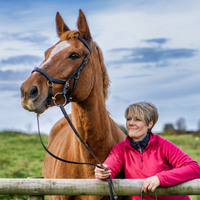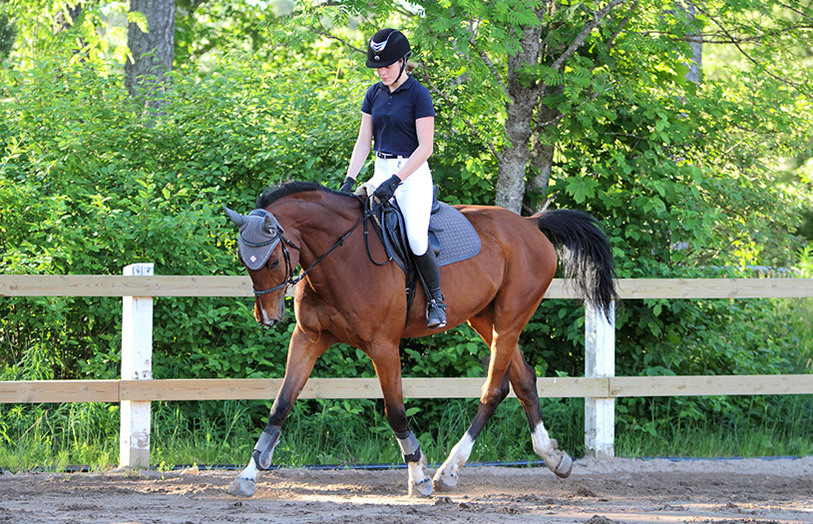
Are You & Your Horse Ready For Bitting Advice? The Steps You Need To Consider First
Equestrian Advice & Guides All Disciplines
Build your business profile for FREE and expose your services to thousands of potential clients!
Create my profile now!
With swathes of people getting back to riding and competing after a time off, it’s natural to have a mindset hiccup and wonder how it will all go. Anxiety can become a habit – it’s learnt. The good news is that anything learnt can be unlearnt too.
Anxiety can be thought of as a very natural response to impending danger. It’s a good mechanism to have. The stress of a situation, or the anxiety beforehand, was always a fabulous alarm system for cavemen. It prevented them being killed by bears, sabre toothed tigers and wild boar. Hmmm… not so useful in the 21st century though! Once the caveman had that outpouring of fight or flight hormones: adrenaline and cortisol, he was literally running on his instincts. Any reasoning centres in the brain were switched off and he entered pure survival mode. Once back to safety, the fight or flight response was turned off and the stress and anxiety disappeared.
As riders, we turn on the stress and anxiety for an activity that we tell ourselves we enjoy! And when we’re really quite safe, riding along happily, we don’t turn off the stress and anxiety.
Our minds are geared to turn off the anxiety!

The part of your mind that controls emotions, memories and habits is the unconscious mind. This is the part we need to work on to remove anxiety when riding. The unconscious mind runs on a set of rules, most of which we are never taught and most of which we break without ever realising. Let’s look at how things run in the unconscious.
1. Your mind will serve you, it will do what you ask, but your instructions must be clear. What do I mean by clear? What you tell your mind must be the way you want something to be.
For example, you should say, “I want to ride well and enjoy it”, rather than “Riding is really scary and I get really nervous about riding”. Your mind creates a storyboard of pictures, sounds and feelings of what it thinks you want. Then it tries to serve you by re-creating them in real life. Be mindful that your unconscious mind eavesdrops on your thoughts and ideas all the time. It is constantly adding to its storyboard for riding.
2. Your unconscious is very literal. It doesn’t have the sophistication of complex language, it takes everything you say and think very literally. If you happen to mention to someone that you’re a nervous rider, your mind will believe it and continue to create situations that fit with that description! In other words, your mind will work to give you what you describe – if that’s yourself as a nervous rider, that’s what it’ll do for you!
3. The unconscious mind is also controlling your physical body. This is the mind-body connection. As a rider, we need both mental strength and physical ability to ride well. This is how the mind can make you freeze or get off your horse.
Let’s imagine a rider had been inadvertently telling their mind that they’re a nervous rider and providing all kinds of “what if” pictures to go with those thoughts. The mind tries to serve you and re-create what it can. It might start with stimulating the fight or flight response, by having adrenaline coursing through your body. This makes you feel like you need to get out of the situation, you want the ride to stop. Most riders continue to ride through this. The mind, trying to persuade you to get off the horse now, cannot understand your persistence. You’ve been telling the mind how scary riding is, you’ve given pictures, disaster movies, thoughts and words to tell the mind how scary it is.

The rider is still riding, however, so the mind makes the rider feel worse – jelly legs, butterflies, sick to the stomach, inability to think, frozen body – this is to make you get away from the danger you’ve been telling your mind about.
Finally, the ride finishes and the mind feels satisfied. It has created for you, to the best of its ability, a scary ride. It has made the ride stop by using the mind-body connection to make you feel physically ill at ease.
The mind decides that, because you continue to ride, you must want to continue to feel this way. Now a habit has developed, so the response to riding can be launched even more quickly!
How then, do we break the cycle? There are lots of avenues open to you: hypnotherapy, NLP and other mindset techniques. Here, I would say the simplest thing is to re-think the way you perceive riding.
1. Be clear in your thoughts about an ideal ride. If you lapse into a disaster movie, say sharply to yourself, “DELETE, DELETE, DELETE!”
2. Avoid thinking about what you don’t want to happen, think about what you DO want to happen.
3. Remember that your thoughts will be taken literally. Label yourself a rider, a confident rider, a rider who is improving, anything other than a nervous or anxious rider.
As with any new habit, the results may take time. Practise often and remember to DELETE any negativity others use: your unconscious mind is the little eavesdropper who takes everything personally, and therefore, it might not hear good about itself!
The author of this article, Dr Tracey Cole, is a Trainer and Master Coach of NLP, Hypnotherapy and Time Line Therapy®. She works with equestrians of all abilities to teach, train and support them in gaining a robust mindset. She is the author of ‘The Confident Rider Mindset: How to Hack Your Mind for Riding Success’, available on Amazon.

